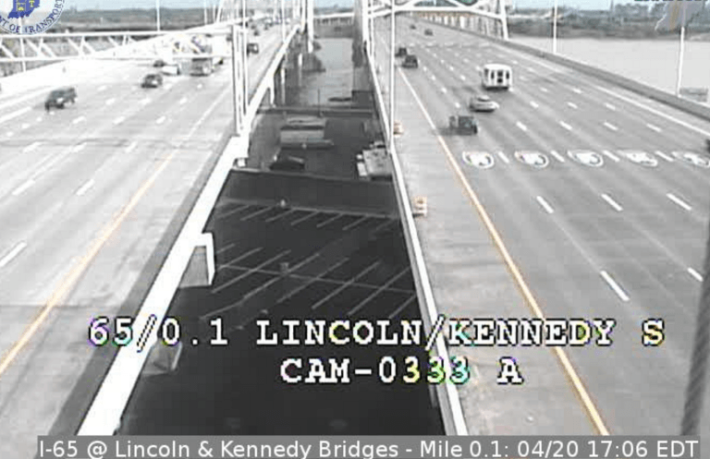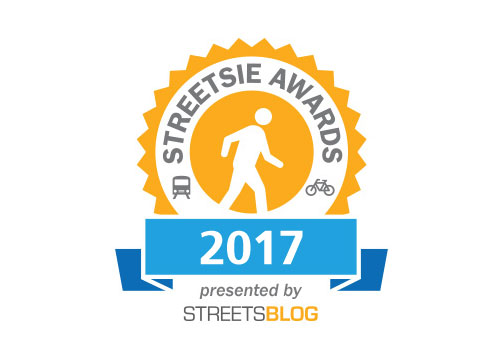We've got a few more polls for you as we wrap up the year here at Streetsblog with our annual Streetsie Awards.
Yesterday we introduced the nominees for Best Street Transformation (cast your vote if you haven't yet). Today we're asking you to judge the highs and lows of 2017.
We'll be on break for the holiday and writing up the Streetsie winners on the later side of next week. Enjoy the voting...
Best Tactical Urbanism Demo

Boston's orange cone bus lane
Boston DOT and the MBTA shortened bus commutes by as much as 30 minutes with little more than a row of orange cones on Washington Street in the Roslindale neighborhood. The agencies tested bus lanes on that congested street ahead of a longer three- to four-week pilot planned for the spring.
Toronto's "leafdown"
Toronto resident Dave Meslin's creative traffic calming demonstration -- using autumn leaves to narrow an excessively wide intersection -- went viral and got folks all over the city talking.
People-protected bike lanes
In New York, San Francisco, Philadelphia, Boston, and elsewhere activists demanded safer bike lanes this year by using their bodies to shield bicyclists from traffic. It got results in Philadelphia, and this advocacy tactic seems to be just getting started.
Plunger-protected bike lanes
Wichita, Omaha, and Providence were a few of the cities that created temporary "protected" bike lanes using toilet plungers this year. It worked like a charm. Providence officials moved to add flexible posts to Fountain Street partly as a result of someone's $72 investment in plungers.
[polldaddy poll=9903353]
Biggest Boondoggle

Kentucky and Indiana's Ohio River Bridges
After spending an astronomical $2.5 billion to build two new highway bridges and a whole mess of road spaghetti right next to downtown Louisville, Ohio and Indiana discovered that people were avoiding their new bridge because they didn't think it was worth paying the $1 toll. Expensive lesson.
Shreveport's I-49 Connector
Shreveport, Louisiana, is planning to pour $700 million into a 3.5 mile highway connector that will only carry 3,600 vehicles a day. In other words, tumbleweeds. Worse, it's planning to demolish a large portion of a black neighborhood to do so. Truly retrograde.
Best Traffic Reduction Policy
Buffalo and Hartford eliminate parking minimums.
Pittsburgh gives everyone who buys a transit pass free bike-share trips.
Columbus gives free transit passes to all downtown workers.






